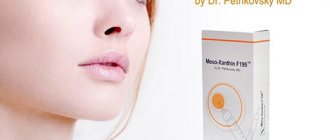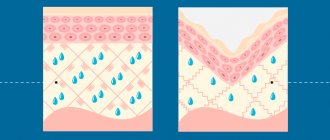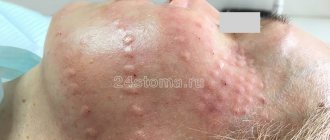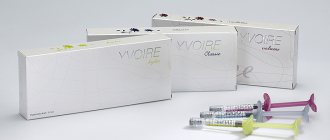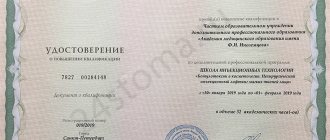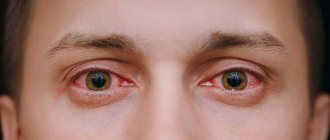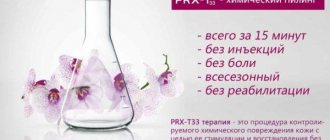From this article you will learn:
- biorevitalization: what kind of procedure is it, reviews,
- photos of patients before and after,
- injection and non-injection techniques,
- how much does biorevitalization cost - price for 1 procedure (for 2022).
Facial biorevitalization is a procedure for intradermal injection of high concentrations of active substances, which can significantly improve the appearance of the skin, increase its elasticity, as well as achieve a lifting effect and reduce the depth of wrinkles. Most often, hyaluronic acid, vitamins, microelements, amino acids are used for this, and in older age - components for intensive skin lifting, for example, peptides, DNA-RNA complexes and DMAE.
The composition of the drug is selected individually for each patient. The age of the patient, the condition of the facial skin, and, what is very important, the type of skin aging are taken into account. For example, for fine-wrinkle and deformation types of aging, completely different drugs will be indicated. An important problem is the training of specialists. How often, for example, do mesotherapists tell patients that capillary mesotherapy must be done before administering biorevitalizants? But in many cases, the severity and duration of the biorevitalization effect will depend on this.
Biorevitalization: photo of the procedure
Indications for biorevitalization –
- therapy for biological skin aging,
- photoaging therapy (including hyperpigmentation and rosacea),
- prevention of aging,
- wrinkles, thinning, decreased elasticity, dry skin,
- deterioration of the skin as a result of smoking (including the appearance of small vertical wrinkles on the lips).
Thus, the biorevitalization technique will allow you to improve the color and texture of the skin (especially for smokers), increase its elasticity, reduce the depth of wrinkles, and achieve a skin lifting effect. Additional effects of this procedure may include correction of hyperpigmentation, reduction in the severity of rosacea, as well as inflammatory elements of acne. The severity of a particular effect will directly depend on the composition of the chosen drug.
Differences between biorevitalization and mesotherapy -
Mesotherapy and biorevitalization of the face and neck are very similar procedures and are performed by the same specialists - mesotherapists. So how are they different? When it comes to intensive rejuvenation of the face and neck (using high concentrations of active ingredients), the term “biorevitalization” is used. Mesotherapy uses lower concentrations of active components, and this procedure can be performed not only on the face, but also on the body.
Thus, when it comes to the correction of cellulite or local fat deposits on the body, or procedures are carried out to improve the condition of the hair and scalp, or to improve the condition of the skin of the face and neck (but with low dosages of active substances) - this is called the term “ mesotherapy". If intensive rejuvenation and lifting of the skin of the face/neck is required, then drugs with high concentrations of active substances are used, and in this case the terms “biorevitalization” or “bioreparation” are used.
For example, the concentration of hyaluronic acid (HA) in mesopreparations is usually only from 0.3-0.5%, which corresponds to 3-5 mg/ml, and in biorevitalization products it is usually from 1.5 to 2.0% (= 15-20 mg/ml). Accordingly, in the second case, the saturation of the dermis with moisture will be much more intense, and this will lead to a more noticeable lifting effect. It is also worth noting that low molecular weight HA (with a molecular weight of about 800 kDa) is usually used in mesotherapy, and high molecular weight HA (from 1800 to 3000 kDa) is used in biorevitalization procedures.
An important point is that mesopreparations are made on a water or sol basis (sol is a liquid gel), and biorevitalizants are produced in the form of viscous gels. This greatly affects the time of drug deposition in tissues. Those. if in the first case, the drugs quickly spread in the tissues and are quickly eliminated from them, then in the second case, a drug depot is created in the tissues (at the site of each injection) for a period of approximately 2-3 weeks. That is why it is customary to inject mesopreparations once a week, and biorevitalizants - usually once every 2-3 weeks. Such differences between mesopreparations and biorevitalizants affect not only the frequency, but also the required number of procedures.
SOLGAR hyaluronic acid tablets: reviews
In the Russian segment of the Internet, Solgar, hyaluronic acid in tablets, is gaining great popularity. The manufacturer claims that taking this drug improves the condition of the joints, penetrating into the interarticular fluid, and also improves the condition of the skin, moisturizes it, fights wrinkles, and so on.
The fact is that hyaluronic acid molecules are too large, and therefore, when taken in tablets, they are not able to be absorbed in the intestines and penetrate into the blood. Accordingly, hyaluronic acid does not penetrate either into the joints or into the skin... The effect can generally only come from either the injectable form or the form for topical use (creams, serums), but not from tablets.
However, some reviews insist that hyaluronic acid in capsules/tablets can be perfectly absorbed in the body and improve its general condition. This is an outright lie, left by paid commentators in forums and thematic blogs, not supported, banally, by either the laws of biochemistry or the laws of human physiology.
Solgar hyaluronic acid: reviews from experts... on the seller’s website page you will, of course, see only positive reviews. Everything about the quality of these reviews is already clear, given that hyaluronic acid is not absorbed at all in the intestines. However, Solgar hyaluronic acid capsules also contain a large dose of vitamin C (as much as 167% of the daily dose in one capsule), which is absorbed in the intestines.
Vitamin C is a good antioxidant and immunomodulator, and of course can improve the general condition of the body. It is clear that if a stimulating effect occurs, it is only due to the presence of this vitamin. For information, Solgar hyaluronic acid price will range from 1200 to 2300 rubles (for 30 capsules). Isn't that a lot for vitamin C alone?
Even if you try (even if you spend a year), you will not find a single clinical study that has been conducted on the effectiveness of oral administration of hyaluronic acid in tablets or capsules. Of course, it is absolutely harmless, but taking it in tablets is absolutely pointless.
Biorevitalization with hyaluronic acid: rationale for effectiveness
Age, ultraviolet radiation, smoking and some other factors lead to gradual aging of the skin. All this leads to a gradual decrease in the activity of fibroblasts and the content of hyaluronic acid (HA) in the skin. A decrease in the activity of fibroblasts leads to a decrease in the production of collagen and elastin, which allows the skin to be firm and elastic, and due to a decrease in the level of HA in the skin, its hydration decreases. As a result, the skin becomes drier and thinner, less elastic, and wrinkles appear.
According to the developers of the biorevitalization method, facial skin rejuvenation occurs by stimulating the activity of fibroblasts that produce collagen and elastin. In addition, the skin’s production of its own HA, which allows it to be more hydrated, also depends on the activity of fibroblasts. For example, if at the age of up to 25 years fibroblasts work at 100%, then in people 25-35 years old their number and activity decrease to 75%, and at 35-45 years old - to 50%, and after 50 years or after menopause in at any age - their number and activity are no more than 25% (compared to young people).
Preparations with low molecular weight HA tend to stimulate angiogenesis and fibroblast function, but at the same time they do not moisturize the skin quite well, because Small HA chains are not able to hold many water molecules (24stoma.ru). But high-molecular HA does not stimulate anything, but retains water well, thereby perfectly moisturizing the skin. Biorevitalizants with HA are indicated primarily for patients with finely wrinkled and tired types of aging, but their use in patients with deformational (edematous) type of aging will only lead to increased swelling and gravitational ptosis of soft tissues.
It is worth saying that now mesopreparations and biorevitalizants with hyaluronic acid are used in most cases by specialists thoughtlessly, because It is believed that the larger the HA, the better. But that's not true. The fact is that when carrying out frequent injections with HA, the latter not only stimulates the activity of fibroblasts or increases skin hydration. Frequent use leads to the activation of enzymes: 1) hyaluronidase - an enzyme that destroys endogenous hyaluronic acid produced by fibroblasts, 2) metalloproteinases - enzymes that destroy the intercellular matrix. Therefore, in fact, you should not do injections with HA more than once a month, and it is better to alternate them with other groups of drugs.
Indications for mesotherapy
To eliminate problems and achieve the desired result, be sure to consider the indications for use. If you identify skin imperfections in advance and compare them with the proposed list for a given cosmetic service, then before going to the clinic you will know whether mesotherapy will help you.
Using the procedure you can get rid of:
- wrinkles (both small and deeper);
- dry and oily skin;
- acne and acne marks;
- flabbiness of the epidermis;
- loss of elasticity;
- fuzzy oval face;
- acne;
- rosacea;
- double chin;
- scars, scars and stretch marks;
- age spots;
- traces of peeling or grinding.
With the help of mesotherapy, you can rejuvenate the skin and eliminate imperfections from the age of 18. With the appearance of the first age-related changes, the lifting effect of this procedure, which is indicated for women with aging skin, is especially effective.
Mesotherapy for rejuvenation is widely used and is practically harmless, but contraindications include diseases that can be caused by injections.
A doctor or cosmetologist must warn you about contraindications for mesotherapy with hyaluronic acid. These include:
- frequent allergies;
- intolerance to the composition of the meso cocktail;
- oncology;
- high blood pressure;
- decreased immunity;
- inflammation in the injection area;
- hemophilia;
- diabetes;
- problems with the heart and blood vessels.
It is recommended to refrain from mesotherapy procedures during pregnancy and lactation. At the same time, the cosmetologist is obliged to warn you about the possible negative effects of cocktails, since their effect on the child has not been fully studied. About 85% of cases of complications and side effects were observed in patients who had contraindications for mesotherapy with hyaluronic acid. You need to undergo an examination if you are not sufficiently aware of the health status of your body.
Biorevitalization technique –
There are several injection techniques - nappage, papules, tubercles, as well as the linear-retrograde technique.
If all of them are used in mesotherapy, then when carrying out biorevitalization - everything except the “nappage” technique, which is associated with the inability of this technique to achieve deposition of the drug in the dermis. Before the biorevitalization procedure, superficial anesthesia of the skin is required using gels and creams containing from 5 to 12% of the anesthetic lidocaine. The cream is applied to the face for 15-20 minutes (under the film).
Papules (superficial or medium) –
This technique involves injections into the dermal layer of the skin, in such a way that at the site of each injection a “papule” will form, which looks like an elevation above the surface of the skin (Fig. 5). The size of the papules will depend on the volume of drug removed at each injection point. Papules can be small (micropapules), having a diameter of 1-2 mm, in which case injections are performed into the upper layers of the dermis. Each injection produces a volume of the drug of about 0.01-0.02 ml, the distance between papules is about 0.3 to 0.5 cm. Micropapules are usually made in areas with thin skin, for example, in the periorbital zone.
In areas with dense skin, papules are made of medium size - 3-4 mm in diameter, injecting 0.03-0.04 ml of the drug with each injection. The needle will penetrate into slightly deeper layers of the dermis, and the distance between papules should be about 1.5 cm. It should be noted that the larger the papules, the slower they will resolve. Usually papules disappear within 3 days, and in rare cases – up to 5-7 days. But if the doctor made medium-sized papules using a drug with partially stabilized hyaluronic acid (doctor’s mistake), then we can sympathize with you, because they will dissolve in about 3 weeks.
Superficial papules: video
Technique “tubercles” –
This technique has a big advantage, because... after it, the skin at the injection sites is practically invisible, and only traces of needle injections are visible. If with the “papules” technique injections are made with a needle placed at an angle of 15 degrees to the surface of the skin, and thus a drug depot is created in the upper or middle layers of the dermis, then with the “tubercles” technique - injections are made with a 4 mm needle at 45 degrees in the skin surface . Thus, the drug depot is created in the deeper layers of the dermis (at a depth of about 3 mm).
The distance between injections is 1.0 on the face, on the neck it is usually 1.5 cm. The disadvantage of this technique is that it is more difficult to control the volume of drug removal at each point.
Linear-retrograde technique –
This technique came from contouring, and most mesotherapists do not like it, because... technically it is the most difficult. However, it is also the most effective, and the same technique is also used for bioreinforcement of the face. If for previous techniques 4 mm needles are used, here they are 12-13 mm long. After injection, the needle is given a horizontal position, and it advances in the middle layers of the dermis parallel to the surface of the skin for its entire length. The drug is administered by retrograde movement of the needle backwards.
This technique is successfully used in the middle and lower thirds of the face - in the area of the cheekbones, cheeks, chin, corners of the mouth, facial contours (strictly along massage lines), in the neck area, and also around the eyes. It allows you to reduce the number of needle injections several times, thereby reducing the rehabilitation period. Advancing the needle 13 mm into the dermis leads to more pronounced subdermal damage (than when using 4 mm needles), which means tissue regeneration will be more active. This means that collagen synthesis will increase not only due to the introduction of active substances, but also in response to damage.
Linear-retrograde technique: video
Important: the biorevitalization procedure itself will take about 15-20 minutes. After the procedure, the skin is treated with a chlorhexidine solution. However, the indicated time does not take into account the lymphatic drainage vascular injection of the face and collar area, as well as the 15-20 minutes required to apply a special mask to the face, which will help minimize the visibility of needle injection marks and relieve redness.
Types of mesotherapy with hyaluronic acid for the face
Cosmetologists use various methods of performing the procedure. It can be injected or non-injected - it depends on the method of introducing the drug into the skin.
- Injection mesotherapy with hyaluronic acid
This format is classic. Using a needle, the mesococktail with active substances is introduced according to the scheme, which is marked in advance.
Injections of the drug can be carried out using two techniques:
- manually (with a syringe with a microneedle);
- factional.
In fractional mesotherapy, hyaluronic acid is simultaneously applied to one area of the skin with several needles using a special device. Using this technique increases the cost of the procedure, but it has many advantages. The method cannot be used on delicate areas of the eyes, neck and nose.
Recommended articles on the topic:
- Facial mesotherapy procedure: pros and cons
- Beauty injections: types of drugs, reviews
- Placental therapy is the secret of eternal youth
- Non-injection mesotherapy with hyaluronic acid
With the help of this innovative development, cosmetologists administer the cocktail without damaging the skin. Additional stimulating devices help the components reach the desired layers of the epidermis.
The non-injection technique is divided into:
- cryomesotherapy (uses cold and electric waves);
- laser therapy;
- iontophoresis (use current);
- magnetophoresis (magnetic waves are used);
- oxygen mesotherapy;
- ultraphonophoresis (using ultrasound);
- aquaphoresis (using laser, electric waves, lymphatic drainage).
Using a non-invasive technique, the procedure can be performed on patients who are afraid of injections or who are prohibited from injections. But for deep penetration of the drug, a larger number of procedures will be necessary.
Important: selection of drugs for biorevitalization
In practice, we most often encounter 2 types of skin aging. Firstly, a finely wrinkled type of aging, which appears already by the age of 30, and in the eye area even earlier. This type is characterized by thin, dehydrated skin and a large number of small expression wrinkles, especially in the eye area. For this type of aging, the use of hyaluronic acid (HA) is a priority. And if in young patients 25-30 years old it is still possible to use biorevitalizants containing only HA, then in patients 30-35 years old the biorevitalizant must already contain vitamins, microminerals, amino acids, and antioxidants.
In patients aged 35-40+ years with a fine wrinkled type, the biorevitalizant should preferably contain (in addition to the above components) nucleotides and matrikin peptides. The latter stimulate collagen synthesis. Moreover, after 30-35 years with this type of aging, in order to achieve a good effect, it is desirable to carry out in parallel 2-3 procedures of capillary mesotherapy of the face, neck, collar area with vascular / drainage drugs - to stimulate lymphatic drainage and blood supply to the skin.
But if patients of this type show symptoms of skin photoaging - such as hyperpigmentation and telangiectasia, then additionally vitamin C, antioxidants (glutathione, coenzyme Q10, thioctic acid), cysteine, lightening peptides will be needed. Vitamin C and antioxidants relieve oxidative stress that occurs when exposed to solar radiation. A drug with this composition will also be useful before going on vacation to hot countries.
Deformation type of aging - but the main type of aging of most Russian women is deformation (edematous). Such patients usually have dense skin, fairly few wrinkles, a large volume of soft tissues of the face due to interstitial edema of the subcutaneous fat, and also have pronounced nasolabial folds and jowls. This type of aging develops due to impaired venous outflow in the face and neck, and is provoked primarily by problems with the cervical spine. If such patients are given drugs with GC, this will further increase the swelling of the face and, as a result, gravitational ptosis of the soft tissues.
Therefore, in such patients, capillary mesotherapy (lymphatic drainage vascular injection) takes first place, as well as, according to indications, the use of lipolytics in the area of fat pads of the face and double chin. During the first 2-3 visits, capillary mesotherapy can be carried out as a single procedure, or it can be combined immediately with the introduction of biorevitalizants. The latter, in case of deformation/edema type of aging, should contain DNA-RNA complexes, as well as vitamins (primarily vitamin C), amino acids, and peptides.
Why is “capillary mesotherapy” (vascular injection) needed?
It is impossible to achieve a pronounced biorevitalization effect (primarily with the deformation type of aging) without stimulating the blood supply to the skin and activating lymphatic drainage. This injection is carried out with vascular preparations “Artichoke”, “Gingko Biloba”, “Rutin + melito extract” or “GAG Complex DVL Capyl”. This is especially true for patients with ptosis, rosacea or complaints of facial swelling. In all these groups of patients, lymphatic drainage vascular injection of the face and cervical-collar area should be done at least 4-5 times.
The volume of vascular preparations per procedure should be no more than 5 ml. First, the cervical-collar area is treated, then injections are made in the projection of the lymph nodes - the area of the earlobes, the sternocleidomastoid muscle, in the area of the jugular fossa and clavicles, as well as in the submandibular area. After this, a series of injections are made along the massage lines of the face and the infraorbital area. In patients with a finely wrinkled type of aging, it is advisable to do 1-2 such vascular puncture procedures, but in patients with a deformational type of aging or patients over 45 years old, 5 or more procedures can be safely performed.
The combination of the drainage drug “Artichoke” with the vascular drug “Rutin + melito extract” will normalize venous outflow, activate lymphatic drainage and microcirculation. All this will remove interstitial edema of the subcutaneous fat, which will reduce the volume of soft tissues and the degree of gravitational ptosis, as well as the severity of the folds. If a patient is prescribed a course of several biorevitalization procedures, then each procedure begins first with a vascular puncture and only after that are injections of the biorevitalizant given. Or the first 2-3 procedures are done only by capillary mesotherapy + soft lipolytics on the face, and biorevitalizants are added only from the 4th procedure.
How to choose a drug for biorevitalization -
Preparations for biorevitalization are currently produced by countless companies.
One of the main components for these purposes are hyaluronic acid (HA) molecules. Typically, the lifespan of chemically unmodified (unstabilized) HA molecules is only 24 to 48 hours. However, biorevitalizants are produced in the form of a viscous gel, which allows even unstabilized HA to be deposited for a slightly longer period, reducing the rate of its destruction. The properties of the drug are very dependent on the molecular weight of the HA chains. High molecular weight HA (from 1500 to 3300 kDa) moisturizes the skin well, but does not have a stimulating effect on fibroblasts. Low molecular weight HA has a stimulating effect on fibroblasts and angiogenesis, but rather weakly moisturizes tissues. At the same time, low-molecular HA is destroyed faster in the skin than high-molecular HA (unless, of course, it has been chemically modified). For example, the preparation “Ial-system ACP” contains stabilized low-molecular HA with a molecular size of 200 kDa.
According to the manufacturer, the degradation period of HA in this drug is 10 days, and given the size of the molecules, one can immediately understand that the drug mainly has a stimulating effect on fibroblasts, activating collagen synthesis in them, but the moisturizing effect of such a drug will be less pronounced than if we will use a drug with high molecular weight HA with a molecular size of, for example, 1800 kDa or more. Next we look at the percentage of HA content in the drug. For drugs with unstabilized HA, its optimal concentration is 1.8-2.0%, but if we are talking about drugs with stabilized HA, then 1.4% is enough.
Important: modern data suggests that preparations with hyaluronic acid should not be used more than once a month, because frequent administration of high concentrations of HA leads to - 1) increased production of the enzyme hyaluronidase, which accelerates the destruction of its own HA synthesized by fibroblasts, 2) enhances the activity of metalloprotease enzymes that destroy the intercellular matrix. Those. it turns out that you inject too much HA into the dermis, and the body reacts to this with a surge in the production of hyaluronidase, which will rapidly destroy not only the biosynthetic HA you introduce, but also its own endogenous HA produced by fibroblasts.
Therefore, it is worth using biorevitalizants with HA no more than once a month, alternating them, for example, with nucleotides. Or another option is to use biorevitalizants with stabilized HA, which has the property of gradually releasing chains of active hyaluronic acid without creating excessively high concentrations of active HA molecules in the tissues over a short period of time. Such drugs act gradually and over a longer period of time, and are usually administered once every 3-4 weeks. Examples of drugs are “Restylane Vital”, “Juvederm Hydrate”, “HyalRepair”, etc.
Mono-preparations with hyaluronic acid –
Below we give an example of the most famous monopreparations with hyaluronic acid. Please note that in any case it makes sense to take such drugs only up to 30-35 years of age. After this age, it is impossible to achieve good skin lifting or intensive rejuvenation using HA alone. More or less the effect will be noticeable only after a course of 4-5 procedures, and then only if your skin is in relatively poor condition. These drugs will not be particularly effective in case of photoaging, because These do not contain a complex of components to relieve oxidative stress.
- Restylane Vital and Restylane Vital Light (Sweden) are the first biorevitalizants in which the technology of chemical modification of HA (i.e., its stabilization) was applied. The preparations contain only 2% and 1.2% hyaluronic acid, respectively, and are used in patients with finely wrinkled type of facial aging: Restylane Vital - for more mature skin, and Restylane Vital Light - to prevent aging of younger skin. Reviews: these drugs are of high quality, but their composition is outdated, and they are suitable for no more than the prevention of age-related changes, and then only with a stretch.
- Juvederm Hydrate (USA) – contains 1.35% stabilized hyaluronic acid + antioxidant mannitol. The antioxidant is quite weak, so the drug is not very suitable for the treatment and prevention of photoaging. Reviews: in our opinion, Juvederm Hydrate should be used only for the prevention of aging in patients with fine wrinkles, and no older than 30 years. A course of at least 3-4 procedures performed once every 3 weeks will be more or less effective.
- The drugs “Ial-system” and “Ial-system ACP” are a line of two biorevitalizants produced in Italy. The drug "Ial-system" contains 1.8% of unstabilized low molecular weight hyaluronic acid (molecule size only 200 kDa). Accordingly, its effect occurs quickly, but will not be too long-lasting, and besides, such a drug moisturizes the skin less - compared to drugs based on high molecular weight HA. Available in 0.6 or 1.1 ml syringes.
The second drug is “Ial-system ACP”. Available in 1.0 ml syringes and containing 2% partially stabilized low molecular weight HA (molecule size also 200 kDa). According to the manufacturer's information, HA remains in the skin a little longer - about 10 days, but this, of course, is still significantly less than the above-mentioned drugs from other brands. Reviews: in our opinion, Ial system biorevitalization is optimal only for the prevention of aging in patients no older than 35 years.
Combined preparations with HA (cocktails) –
The group of these drugs is so numerous that we will present only one of the many options - the Revofil Aquashine line of affordable drugs (made in Korea). Available in 2.0 ml syringes.
- Biorevitalizants Revofil Aquashine - the first option is “Aquashine”, containing unstabilized high molecular weight 1.5% HA, peptides, amino acids, vitamins and minerals, coenzymes (56 components in total).
In our opinion, it is better to use in patients 35+; it gives a good lifting effect when used as a course. The second option is “Aquashine BR”, which additionally adds peptides that lighten the skin, and therefore it is well suited for hyperpigmentation, for example, for aged skin 45+, as well as for the treatment and prevention of photoaging. “Aquashine BTX” – suitable for ages 30+. It also has a similar composition, but peptides are additionally added to it, the effect of which is similar to Botox®, i.e. smooth out small facial wrinkles. Aquashine biorevitalization reviews: these drugs are suitable for patients with moderate age-related changes. Not suitable for patients with deformational/edema type of aging.
Powerful biorevitalizants for aging skin –
If your age is 40-45+ and you need a noticeable lifting effect and reduction in the depth of wrinkles, then hyaluronic acid, vitamins, minerals, amino acids and antioxidants alone are no longer enough. This requires nucleotides (DNA-RNA complexes), as well as peptides and growth factors. At this and even more so at an even more mature age, the dermis contains a significantly smaller number of fibroblasts, not to mention their activity. And if there are almost no fibroblasts, then there is nothing to stimulate. This is especially true for postmenopausal women.
- Nucleotide-based drugs – an example is NucleoSpire DNA-RNA from Mesopharm®. It contains nucleotides in a concentration of 2% and is available in syringes of 1.3 and 2.0 ml. Reviews: the drug gives a delayed but pronounced lifting effect, stimulates collagen production, and is used to correct hyperpigmentation, chrono- and photoaging. Suitable for intensive rejuvenation, can be used periodically in patients 35+ and regularly after 40-45 years. Suitable also for patients with deformational (edematous) type of skin aging. A similar drug based on nucleotides is Plinest (Italy). These drugs do not work for young people.
- “Meso-Wharton P199” - this drug contains not only nucleotides, vitamins (A, E, C, group B), trace elements and antioxidants, but also high molecular weight 1.5% hyaluronic acid (with a molecular size of 3300 kDa). This drug contains growth factors, as well as peptides that stimulate the proliferation of fibroblasts and stem cells in the dermis, and also enhance the production of new collagen by fibroblasts. Not for deformation/edema type of aging.
- The “HYALREPAIR” line – biorevitalizant “Hyalrepair -02” contains 1.4% stabilized HA, vitamin C and the main amino acids involved in collagen synthesis, these are proline, glycine and lysine. An excellent product for loose, finely wrinkled skin. The drug “Hyalrepair -04” - in addition to the same hyaluronic acid, contains vitamin C, glutathione and cysteine. This drug is well suited for the treatment of photoaging, copes well with the network of fine wrinkles, hyperpigmentation and rosacea. The course of these drugs usually consists of 3 procedures at intervals of 3 weeks.
- “Nucleospire Revitalizing Complex A” is a good biorevitalizant based on 1.8% unstabilized HA, with a large amount of antioxidants (vitamin C, glutathione, thioctic acid, coenzyme Q10), vitamin B5. This composition perfectly relieves oxidative stress after sun exposure, helps moisturize the skin, lighten hyperpigmentation and prevent its formation. Those. this drug is good for photoaging, optimal before and after vacation to hot countries. You can have 30+ regularly (and even 25+, but not often).
“Nucleospire Revitalizing Complex B” (Hydro Line Extra) is a good biorevitalizant also based on 1.8% unstabilized HA, contains 19 amino acids, all B vitamins, microminerals, and the antioxidant glutathione. If the previous drug is used for the prevention and treatment of photoaging (including at a moderately young age), then this drug is for aging skin and is intended to stimulate collagen production. Naturally, it is not as effective as Meso-Wharton P199, but it also costs 2 times less.
Important : for aging skin, only a course of biorevitalization (from 3 to 7 procedures) can give a good effect. Most often, the course is carried out not with one particular drug, but with a combination of several, and their choice for each woman will be individual.
Low molecular weight, high molecular weight... What is it?
Everyone is used to affectionately calling it “hyaluronic acid,” but in fact, hyaluronic acid comes in different forms (“black, white, red...”
